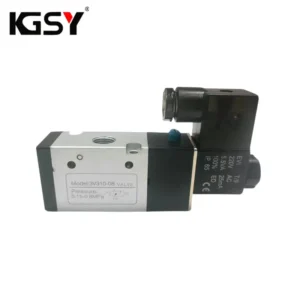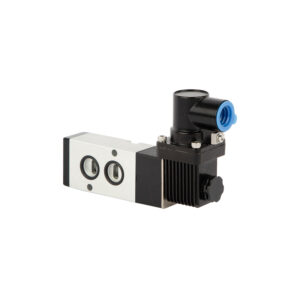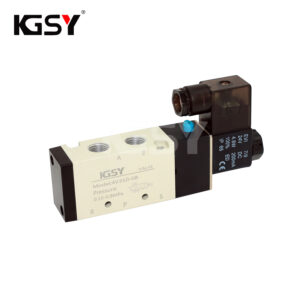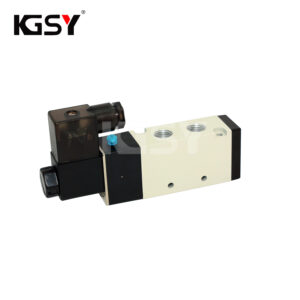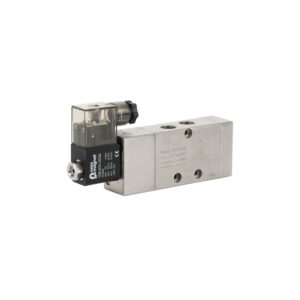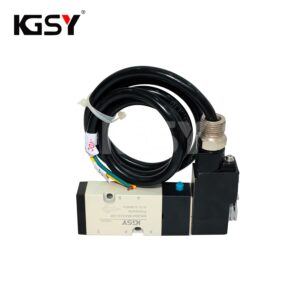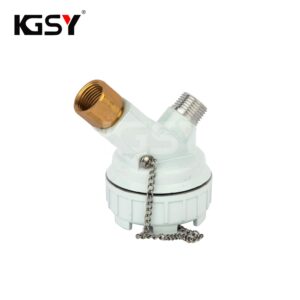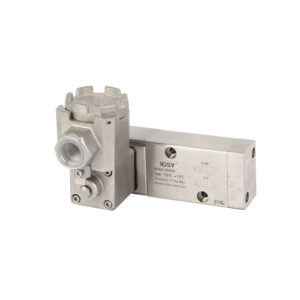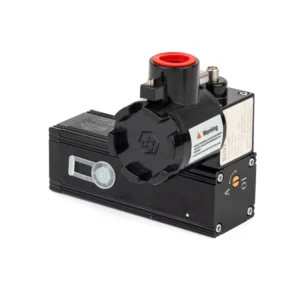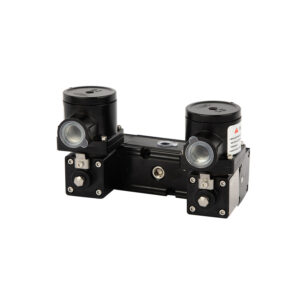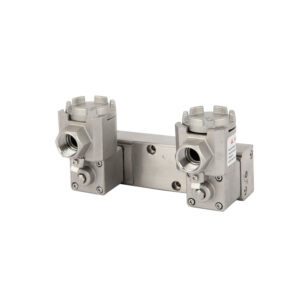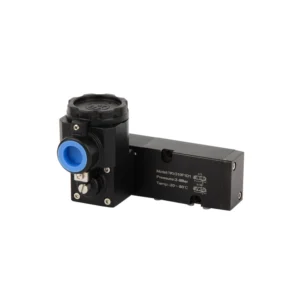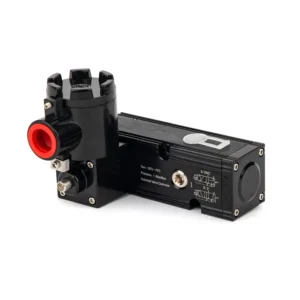Solenoid Valve
Showing all 14 results
-
Solenoid Valve
3V3 SERIES
-
Solenoid Valve
4M SERIES
-
Solenoid Valve
4V2 SERIES
-
Solenoid Valve
4V3 SEIRES
-
Solenoid Valve
4V4 SERIES
-
Solenoid Valve
DS-4M3 SERIES
-
Solenoid Valve
KG700-XQG
-
Solenoid Valve
KG700-XQH
-
Solenoid Valve
KG800-AS SERIES
-
Solenoid Valve
KG800-C SERIES
-
Solenoid Valve
KG800-CD SERIES
-
Solenoid Valve
KG800-DS SERIES
-
Solenoid Valve
KG800-K SEIRES
-
Solenoid Valve
KG800-N SERIES
A solenoid valve is an electromechanical device used to control the flow of fluids or gases in a system. It works by using an electric coil (solenoid) to operate a valve mechanism, opening or closing flow paths in automated process control. These valves are essential in a wide range of industrial applications, from fluid handling to pneumatic and hydraulic systems.
Solenoid valves are a cornerstone of fluid and gas automation. Their speed, precision, and reliability make them suitable for nearly every industrial process—from water and air to oil, steam, and gas.
When choosing a solenoid valve, consider your application’s media type, pressure, temperature, and safety needs. Selecting the right model ensures safe, efficient, and long-lasting operation of your industrial systems
🔧 How Does a Solenoid Valve Work?
Solenoid valves use electromagnetic force to control fluid flow:
1. When electricity flows through the solenoid coil, it generates a magnetic field.
2. This magnetic field pulls a plunger or piston inside the valve.
3. Depending on the valve design, this action either opens or closes the orifice.
4. When power is cut, the spring returns the plunger to its original position.
This fast and reliable operation makes solenoid valves ideal for on/off control and automated systems.
________________________________________
🧩 Key Components of a Solenoid Valve
• Solenoid Coil – The electromagnetic coil that powers the valve.
• Plunger/Piston – A movable core that controls the opening/closing of the valve.
• Spring – Returns the plunger to its normal position when the coil is de-energized.
• Valve Body – Contains the fluid paths, usually made of brass, stainless steel, or engineering plastics.
• Seal or Diaphragm – Prevents leaks and allows precise control of flow.
________________________________________
⚙️ Types of Solenoid Valves
1. Direct-Acting Solenoid Valve
• Works without requiring pressure assistance.
• Used for low-pressure systems or zero-pressure applications.
2. Pilot-Operated Solenoid Valve
• Uses pressure from the line to assist in operation.
• Suitable for higher flow rates and larger valve sizes.
3. Normally Closed (NC) Solenoid Valve
• Default state: valve is closed without power.
• Opens only when the coil is energized.
4. Normally Open (NO) Solenoid Valve
• Default state: valve is open without power.
• Closes when the coil is energized.
________________________________________
🔍 Key Specifications to Consider
Specification Description
Port Size Ranges from 1/8″ to 2″ and beyond, depending on the flow requirement.
Voltage Common coils operate at 12V DC, 24V DC, 110V AC, or 220V AC.
Response Time Solenoid valves typically switch in milliseconds.
Media Compatibility Fluids, gases, steam, or aggressive chemicals.
Pressure Range From vacuum service up to 100+ bar, depending on the valve.
Material Brass, stainless steel, PVC, or PTFE depending on media.
Seal Type NBR, FKM (Viton), EPDM, PTFE – selected based on fluid type and temperature.
________________________________________
🏭 Common Applications of Solenoid Valves
Solenoid valves are found in almost every industry. Some typical uses include:
• ✅ Water treatment systems
• ✅ Steam control in food processing
• ✅ Air handling in pneumatic systems
• ✅ Fuel gas shut-off in combustion control
• ✅ Hydraulic flow control in industrial machinery
• ✅ CIP (Clean-in-Place) systems in pharmaceutical/food industries
• ✅ HVAC and refrigeration
________________________________________
🛠️ Installation Tips
• Always install valves in the correct flow direction.
• Use filtration to prevent debris from damaging internal parts.
• Avoid overheating the coil—ensure correct voltage is used.
• Mount vertically with the coil facing upwards (recommended).
• Consider surge protection to prevent coil damage.
________________________________________
✅ Benefits of Using Solenoid Valves
• Fast and precise on/off control
• Low power consumption (especially with latching or pulse valves)
• Compact size and easy to automate
• Compatible with a wide range of media and environments
• Long lifespan with minimal maintenance

